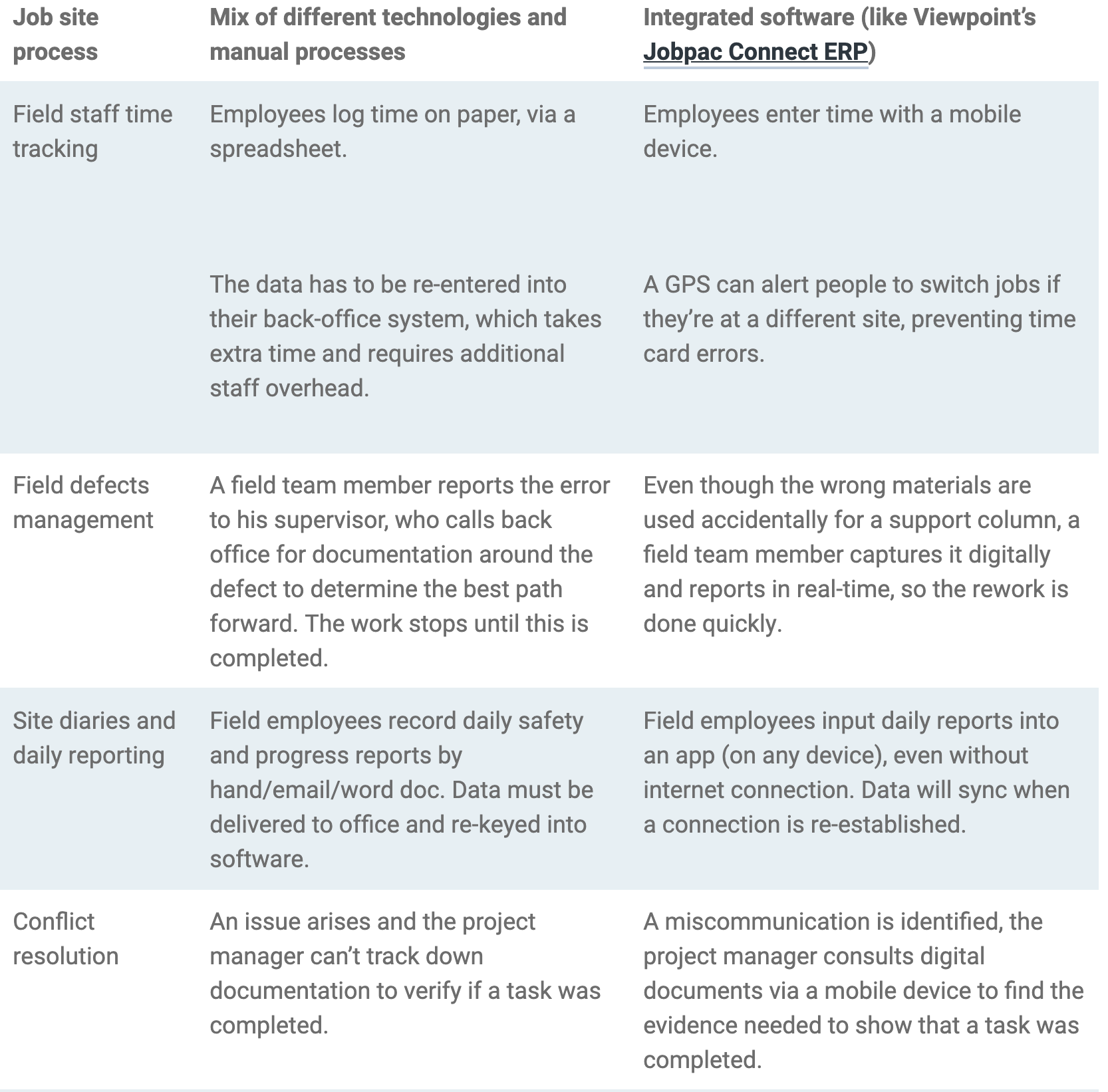Why You Need Integrated Construction Software
0%

In your search for a suitable project management system for your construction business, you will no doubt be faced with the challenge of narrowing down many options. Arguably, one of the most important factors to consider will be the new system’s compatibility with your existing systems. It’s the only way to ensure that staff have quick access to the data they need in order to make informed decisions.
Why is Integration Important?
Put simply, disconnected systems increase risk. Construction projects involve many moving parts, so it’s important to have an audit trail each step of the way.
Without well-integrated systems, you may have different versions of necessary documents living in different systems with potentially different data, muddling the facts and opening you up to making critical mistakes. Imagine making a decision that impacts the entire organisation based on incorrect figures!
In contrast, clean data that flows seamlessly between your systems will allow staff to make important decisions faster. From beginning to end, the data is reliable and consistent.
Having integrated software is key to your success as a modern contractor.
Without software that connects your back office, project team and field staff, it’s too easy to miss project deadlines. Office and field teams are already disconnected both physically and virtually and manual processes for field employees are error-prone and time-consuming.
Here are some examples of scenarios that can be greatly improved with an integrated project management system.

It’s evident that what’s needed to be efficient and profitable is to enable staff to be plugged into the same integrated system as the rest of company.
Should You Consider Single or Multiple Vendors?
Once you’ve decided that you require integrated systems, you need to decide whether to use multiple vendors whose systems integrate with each other or use a single vendor for all of your systems.
With a multi-vendor, you’re able to choose from a variety of vendors and receive regular upgrades from those vendors. However, there are some drawbacks:
- You will pay a higher cost because you can’t package systems together;
- You will deal with complex integration because you need every component to be compatible with the rest of the programs in your IT infrastructure to put enterprise resource planning (ERP) system in place — more time consuming and challenging;
- It is a laborious procurement process because you have to get in touch, negotiate terms and conditions, check contracts and close deals, which can take time and be confusing; and
- You have more data breach points for IT to secure. IT must ensure compliance and implement timely upgrades and patches to all of the different touch points.

In contrast, using a more integrated system provided by a single vendor has multiple advantages:
- Lower up-front costs (more features without the same capital expenditure);
- Lesser procurement effort (no need to create unnecessary strain);
- A streamlined system (all components of the ERP system are compatible with each other and designed for integration — even with future upgrades);
- Faster training and utilisation, with a dedicated team ready to help; and
- Efficient billing and coordination (the finance department doesn’t have to collate various invoices and payment receipts for numerous suppliers, just one account and one vendor).
If you’re interested in learning more about how Viewpoint can help streamline your construction business, download our Request for Information fact sheet. Or if you’d like to keep learning about how to choose the best software for your business, download our Construction Software Buyer’s Guide.



